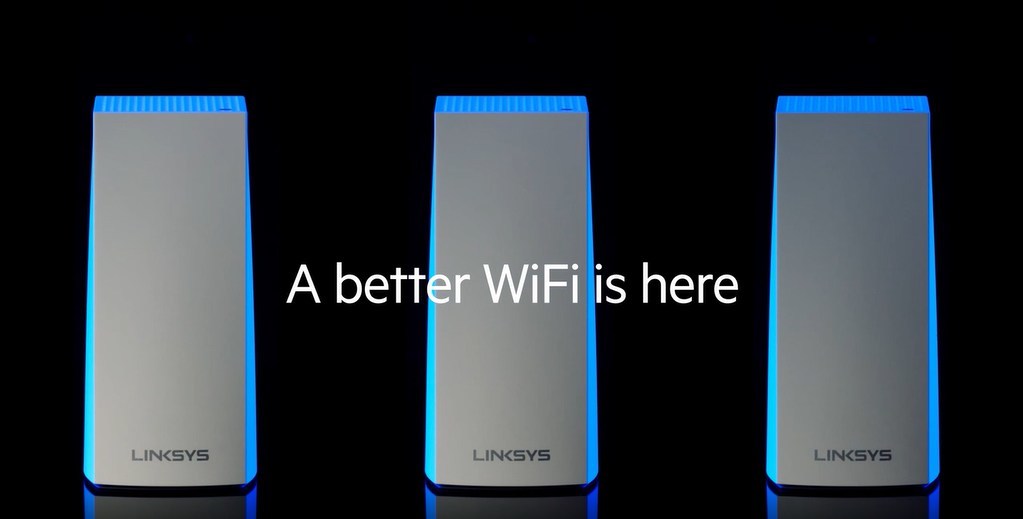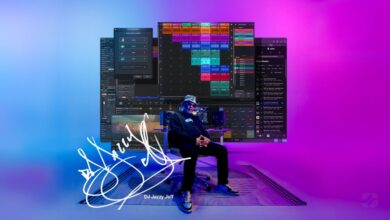The Atari VCS to be Powered by AMD’s Newly Announced High-Performance Ryzen Processor

At the Taiwan Embedded Forum, AMD (NASDAQ: AMD) announced the Ryzen™ embedded product family is growing with the new AMD Ryzen™ Embedded R1000 SoC. Building upon the success of the Ryzen™ Embedded V1000 SoC, the AMD Ryzen Embedded R1000 SoC provides embedded customers with dual core, quad-threaded performance, as well as the ability to run fanless, low power solutions for 4K displays; while providing leading-edge security features. The AMD Ryzen Embedded R1000 is perfect for applications in digital displays, high-performance edge computing, networking, thin clients and more.
Customers like Advantech, ASRock Industrial, IBASE, Netronome, Quixant and others are already working on Ryzen Embedded R1000-based products. As well, Atari© is using the high-performance Vega 3 graphics and ‘Zen’ CPU architecture in the AMD Ryzen Embedded R1000 SoC to power the upcoming Atari VCS™ game system.
“The AMD Ryzen Embedded R1000 builds out the Ryzen Embedded family and provides a compelling option for customers that want access to the powerful ‘Zen’ and ‘Vega’ architecture and are looking for a highly competitive power/performance solution,” said Stephen Turnbull, director of product management and business development, Embedded Solutions, AMD. “The Ryzen Embedded R1000 can support rich multimedia environments for digital displays and casino gaming, enterprise class security features for edge computing, networking and thin clients, and, most importantly introduces a new class of performance while providing customers with software and hardware compatibility with the extended Ryzen Embedded family.”
Growing the Ryzen Embedded Family
The AMD Ryzen Embedded R1000 continues to provide the embedded industry with the high-performance, rich multimedia capabilities and advanced security features established with the Ryzen Embedded V1000.
Specifically, as the embedded industry demands more immersive and engaging visual experiences, customers need processors that can support high-resolution displays with demanding graphics. The AMD Ryzen Embedded R1000 supports up to three 4K displays at up to 60 FPS, while providing H.265 Encode/Decode(10b) and VP9 decode3 capabilities. This enables OEMs and ODMs to deliver a compelling visual experience.
As well, the Ryzen Embedded R1000 utilizes the same leading-edge security features of the AMD embedded family, including Secure Root of Trust and Secure Run Technology, giving customers the features for enabling secure solutions, whether they are connected into an edge computing network, or running a digital display.
| Model | TDP Range | Core/Thread Count | GPU CU (SIMD) | Ind. Displays | L2 Cache | L3 Cache | Max DDR4 Rate | Base Freq. GHz | 1T Boost Freq. GHz | GPU Freq. GHz | Dual Ethernet Ports |
| R1606G | 12-25W | 2/4 | 3 | 3 | 1MB | 4MB | 2400 | 2.6 | 3.5 | 1.2 | 10Gb |
| R1505G | 12-25W | 2/4 | 3 | 3 | 1MB | 4MB | 2400 | 2.4 | 3.3 | 1.0 | 10Gb |
New Customers Driving Early Adoption
As an industry leader in customer facing marketing technology including digital signage, STRATACACHE picked the AMD Ryzen Embedded R1000 and Ryzen Embedded V1000 processors to power new multi-output digital signage players serving the STRATACACHE, Scala, X2O Media and Real Digital Media product families. The players take advantage of the Ryzen Embedded platform, as well as the outstanding GPU performance to enable premium 4K visual experiences.
“The benefit of the AMD Ryzen Embedded R1000 and V1000 is it allowed us drive down the cost of multi-output 4K experiences,” Chris Riegel, CEO of STRATACACHE. “Both the AMD Ryzen Embedded V1000 and R1000 provided us the graphics performance we needed in a single system on a chip that would have previously required more costly CPU and discrete GPU pairs, thereby saving us system costs and providing a smaller, more power efficient footprint that’s powerful enough to run multiple 4K displays supporting our world class CMS platforms.”
Netronome, a leader in high-performance, intelligent server and storage networking solutions, is using the AMD Ryzen Embedded R1000 SoC for new advancements in networking solutions, security appliances and edge cloud computing. “The benefit of the AMD Ryzen Embedded R1000 for us is to expand our product range using the same high performance ‘Zen’ CPU cores, providing enterprise-class security features and leading-edge connectivity, as demonstrated in the larger Ryzen and EPYC™ processors,” said Mike Benson, SVP of Systems and Platforms Engineering at Netronome. “Our customers want to make sure they have secure and performant devices that provide them a great value, and the AMD Ryzen Embedded R1000 SoC combined with our Network Flow Processor does just that. We’re excited to see the AMD Embedded portfolio expand and add it into our family of products.”
Quixant is a global leader focusing exclusively on the design and manufacture of the most advanced PC-based computer systems and monitors for the global gaming industry. “As a highly-valued launch partner of the AMD Ryzen Embedded R1000 SoC, we are excited to yet again bring high-performance embedded processing to the casino and gaming industry,” said John Malin, global sales director, Quixant. “Our customers demand high quality graphics and displays, and AMD Ryzen embedded processors allow us to deliver that experience. Now with the new AMD Ryzen Embedded R1000 SoC, we can continue to deliver that, but at a better price per performance, benefiting everybody. The first offering is the QXi-7000 LITE – our most versatile platform yet.”
“With the AMD Ryzen Embedded R1000 powering the Atari VCS, we can support the 4K 60fps HDR content that users expect from a modern, secure gaming and entertainment system,” said Michael Arzt, COO of Atari Connected Devices. “AMD’s new Ryzen Embedded SoC will also help protect the VCS’ environment and content as we support an unprecedented open-access model that allows Atari’s highly-creative community to install any other operating system side by side with the Atari OS.”
Availability
The AMD Ryzen Embedded R1000 will be available this quarter to ODMs and OEMs worldwide and is already supported by numerous hardware and software companies including Advantech, Alphainfo, ASRock Industrial, Axiomtech, DFI, iBase, Kontron, MEN, Mentor, Sapphire, zSpace and more.
As well, continuing a great partnership between the two companies, the AMD Ryzen Embedded R1000 SoC supports the Mentor® Embedded Linux® Flex OS, which is available now. You can read more here.
Supporting Resources
- Learn more about the AMD Ryzen Embedded R1000 SoC here
- Learn more about AMD Embedded Products at AMD.com/Embedded
- Become a fan of AMD on Facebook
- Follow AMD on Twitter
About AMD
For 50 years AMD has driven innovation in high-performance computing, graphics and visualization technologies ― the building blocks for gaming, immersive platforms and the datacenter. Hundreds of millions of consumers, leading Fortune 500 businesses and cutting-edge scientific research facilities around the world rely on AMD technology daily to improve how they live, work and play. AMD employees around the world are focused on building great products that push the boundaries of what is possible. For more information about how AMD is enabling today and inspiring tomorrow, visit the AMD (NASDAQ:AMD) blog, Facebook and Twitter pages.
This press release contains forward-looking statements concerning Advanced Micro Devices, Inc. (AMD) including the features, functionality, availability, timing, deployment, benefits and expectations of the AMD RyzenTM Embedded R1000 SoC, which are made pursuant to the Safe Harbor provisions of the Private Securities Litigation Reform Act of 1995. Forward-looking statements are commonly identified by words such as “would,” “intends,” “believes,” “expects,” “may,” “will,” “should,” “seeks,” “intends,” “plans,” “pro forma,” “estimates,” “anticipates,” or the negative of these words and phrases, other variations of these words and phrases or comparable terminology. Investors are cautioned that the forward-looking statements in this document are based on current beliefs, assumptions and expectations, speak only as of the date of this document and involve risks and uncertainties that could cause actual results to differ materially from current expectations. Such statements are subject to certain known and unknown risks and uncertainties, many of which are difficult to predict and generally beyond AMD’s control, that could cause actual results and other future events to differ materially from those expressed in, or implied or projected by, the forward-looking information and statements. Material factors that could cause actual results to differ materially from current expectations include, without limitation, the following: Intel Corporation’s dominance of the microprocessor market and its aggressive business practices may limit AMD’s ability to compete effectively; AMD has a wafer supply agreement with GF with obligations to purchase all of its microprocessor and APU product requirements, and a certain portion of its GPU product requirements, from GLOBALFOUNDRIES Inc. (GF) with limited exceptions. If GF is not able to satisfy AMD’s manufacturing requirements, its business could be adversely impacted; AMD relies on third parties to manufacture its products, and if they are unable to do so on a timely basis in sufficient quantities and using competitive technologies, AMD’s business could be materially adversely affected; failure to achieve expected manufacturing yields for AMD’s products could negatively impact its financial results; the success of AMD’s business is dependent upon its ability to introduce products on a timely basis with features and performance levels that provide value to its customers while supporting and coinciding with significant industry transitions; if AMD cannot generate sufficient revenue and operating cash flow or obtain external financing, it may face a cash shortfall and be unable to make all of its planned investments in research and development or other strategic investments; the loss of a significant customer may have a material adverse effect on AMD; AMD’s receipt of revenue from its semi-custom SoC products is dependent upon its technology being designed into third-party products and the success of those products; AMD products may be subject to security vulnerabilities that could have a material adverse effect on AMD; data breaches and cyber-attacks could compromise AMD’s intellectual property or other sensitive information, be costly to remediate and cause significant damage to its business and reputation; AMD’s operating results are subject to quarterly and seasonal sales patterns; global economic uncertainty may adversely impact AMD’s business and operating results; AMD may not be able to generate sufficient cash to service its debt obligations or meet its working capital requirements; AMD has a large amount of indebtedness which could adversely affect its financial position and prevent it from implementing its strategy or fulfilling its contractual obligations; the agreements governing AMD’s notes and the Secured Revolving Line of Credit impose restrictions on AMD that may adversely affect its ability to operate its business; the markets in which AMD’s products are sold are highly competitive; AMD’s issuance to West Coast Hitech L.P. (WCH) of warrants to purchase 75 million shares of its common stock, if and when exercised, will dilute the ownership interests of its existing stockholders, and the conversion of the 2.125% Convertible Senior Notes due 2026 may dilute the ownership interest of its existing stockholders, or may otherwise depress the price of its common stock; uncertainties involving the ordering and shipment of AMD’s products could materially adversely affect it; the demand for AMD’s products depends in part on the market conditions in the industries into which they are sold. Fluctuations in demand for AMD’s products or a market decline in any of these industries could have a material adverse effect on its results of operations; AMD’s ability to design and introduce new products in a timely manner is dependent upon third-party intellectual property; AMD depends on third-party companies for the design, manufacture and supply of motherboards, software and other computer platform components to support its business; if AMD loses Microsoft Corporation’s support for its products or other software vendors do not design and develop software to run on AMD’s products, its ability to sell its products could be materially adversely affected; and AMD’s reliance on third-party distributors and AIB partners subjects it to certain risks. Investors are urged to review in detail the risks and uncertainties in AMD’s Securities and Exchange Commission filings, including but not limited to AMD’s Annual Report on Form 10-K for the year ended December 29, 2018.





